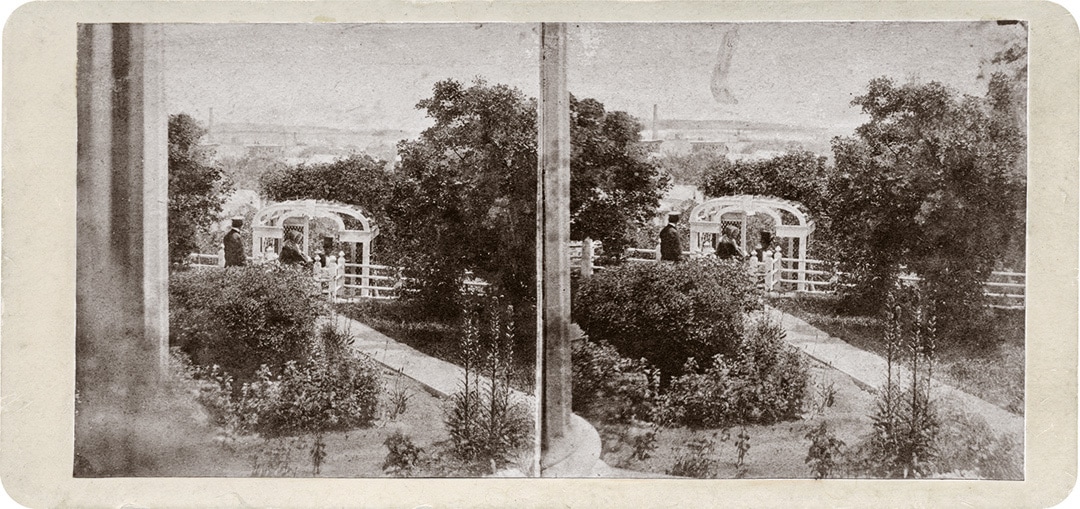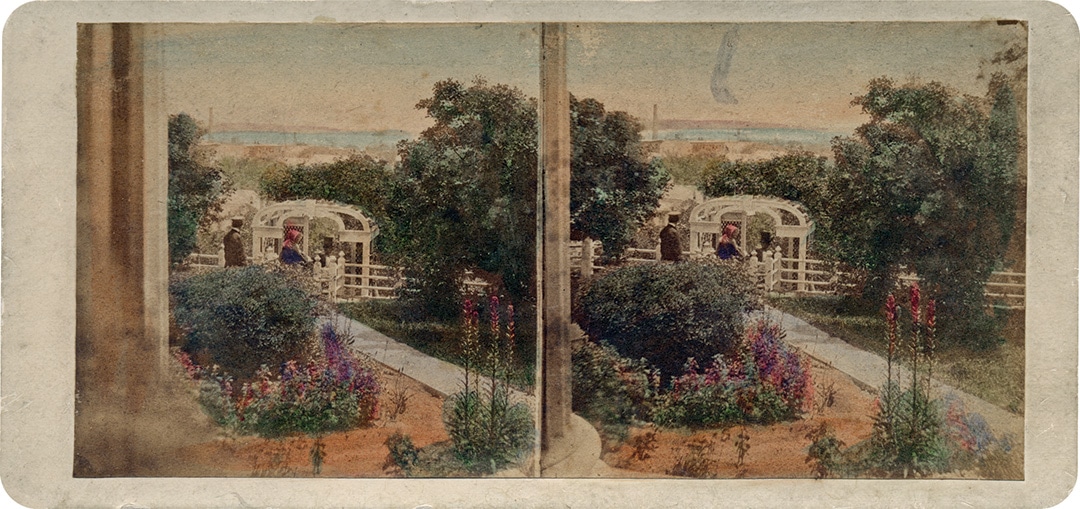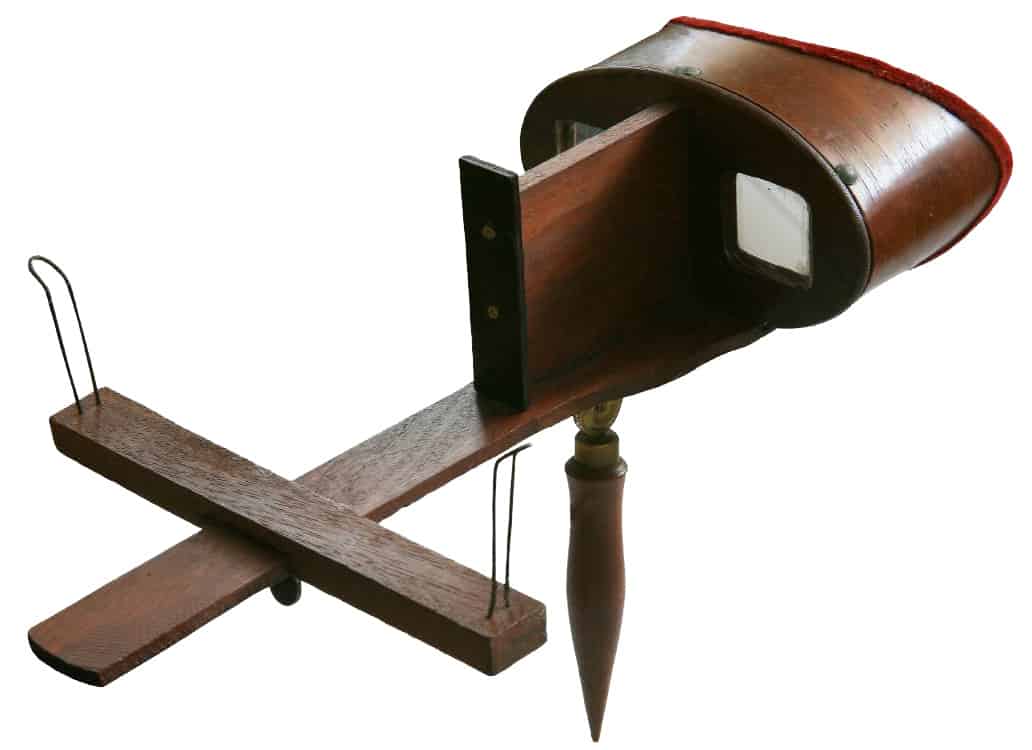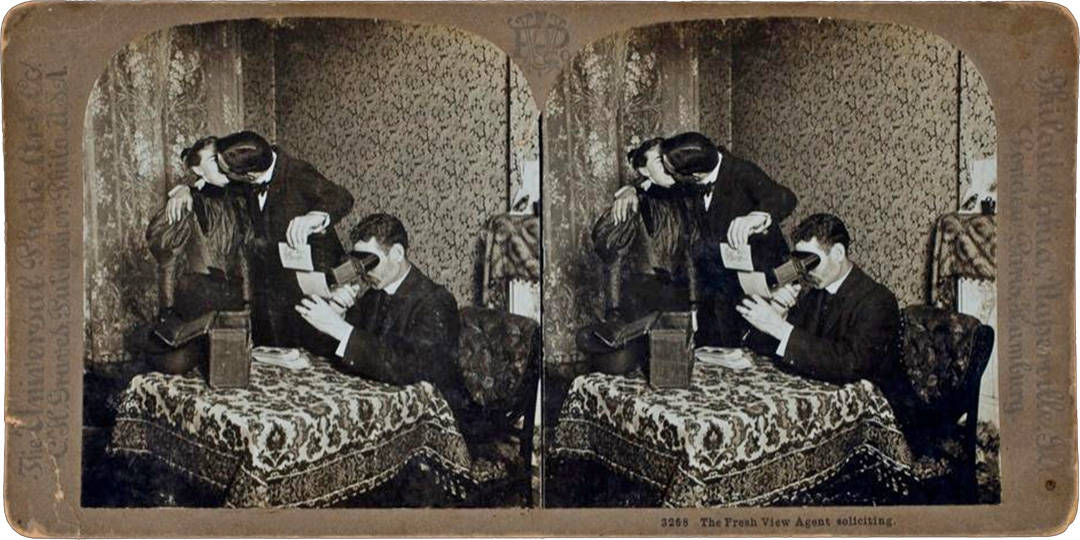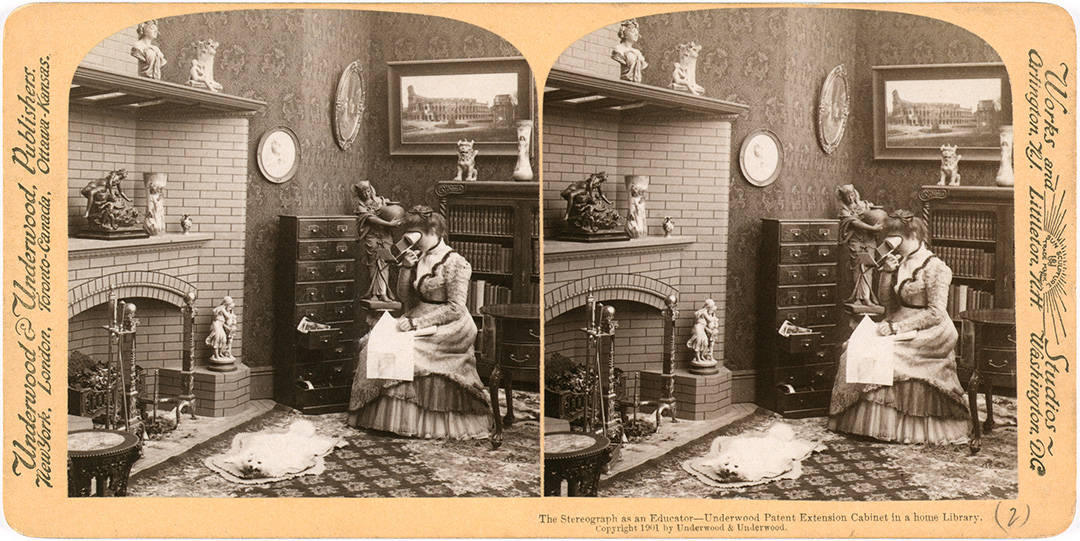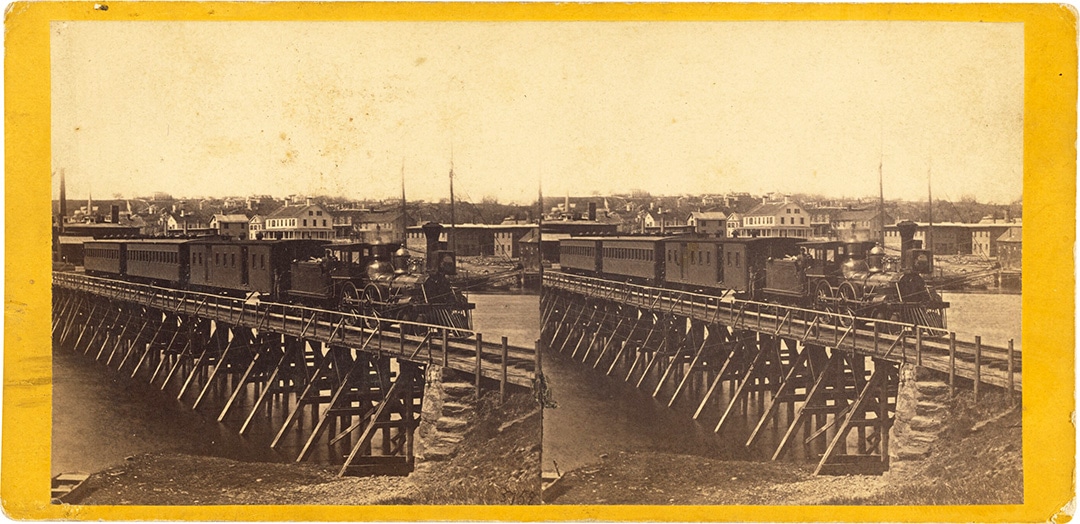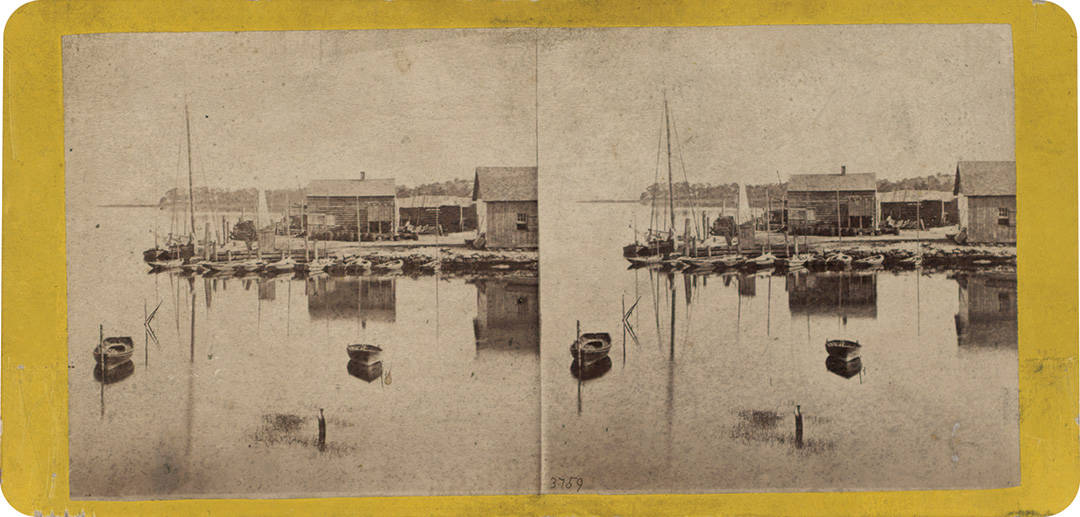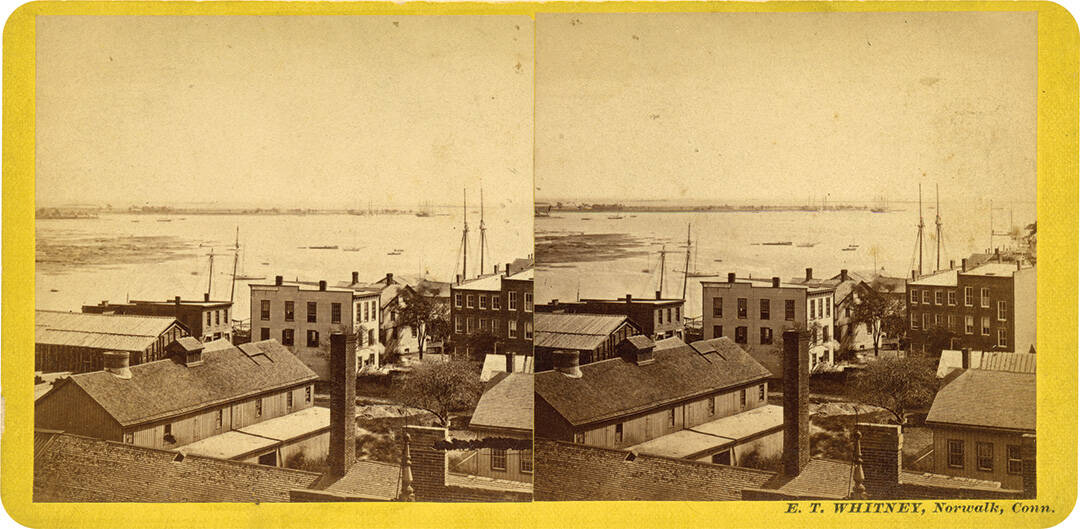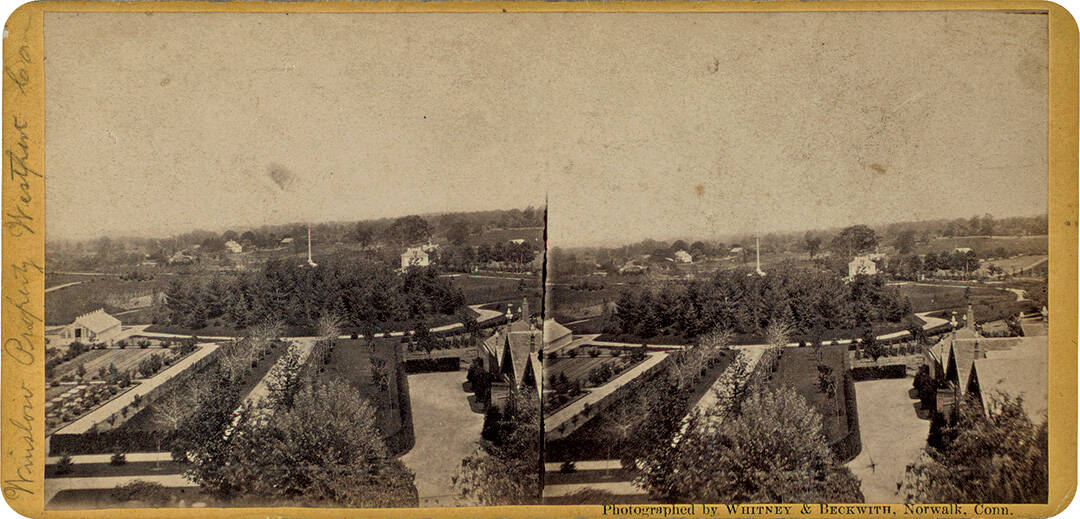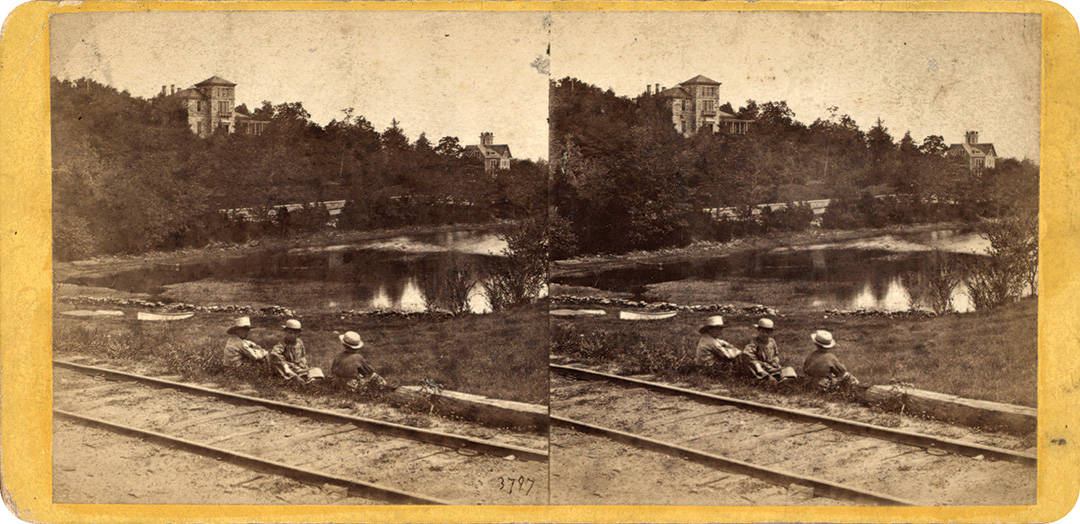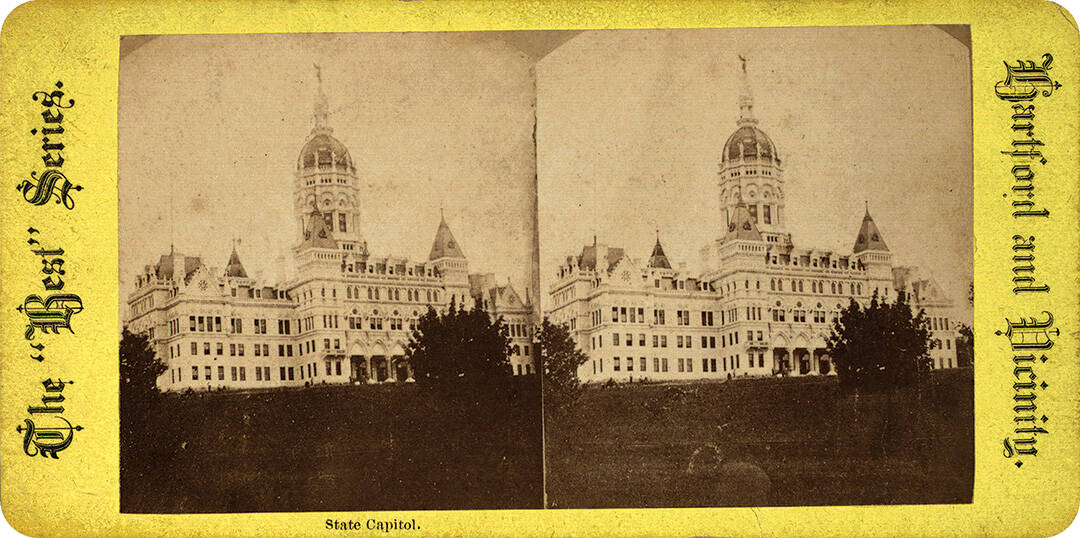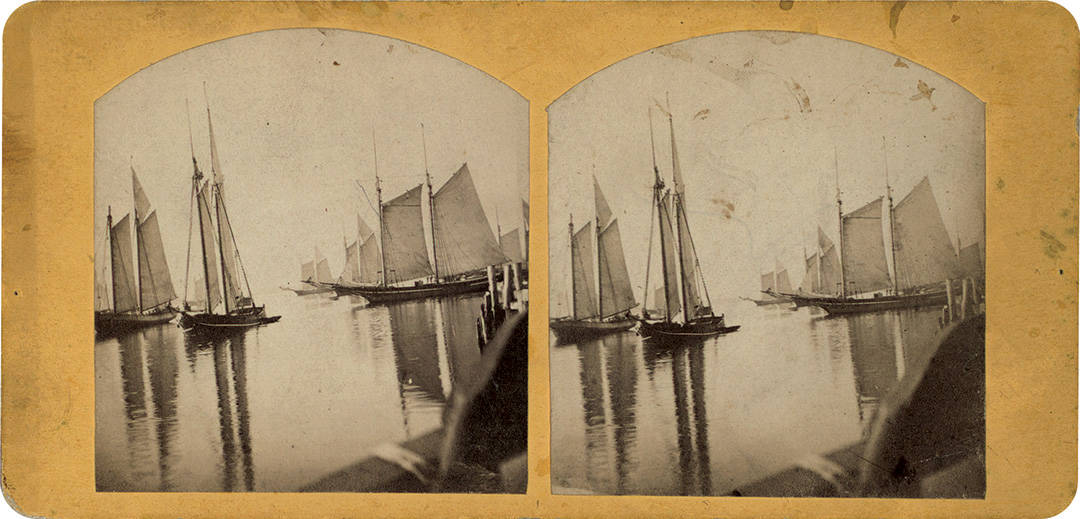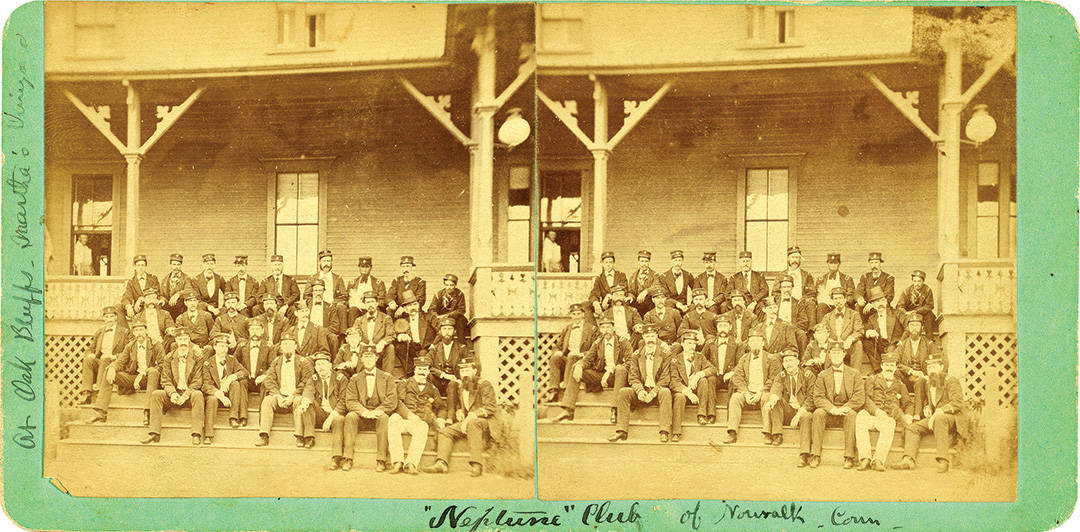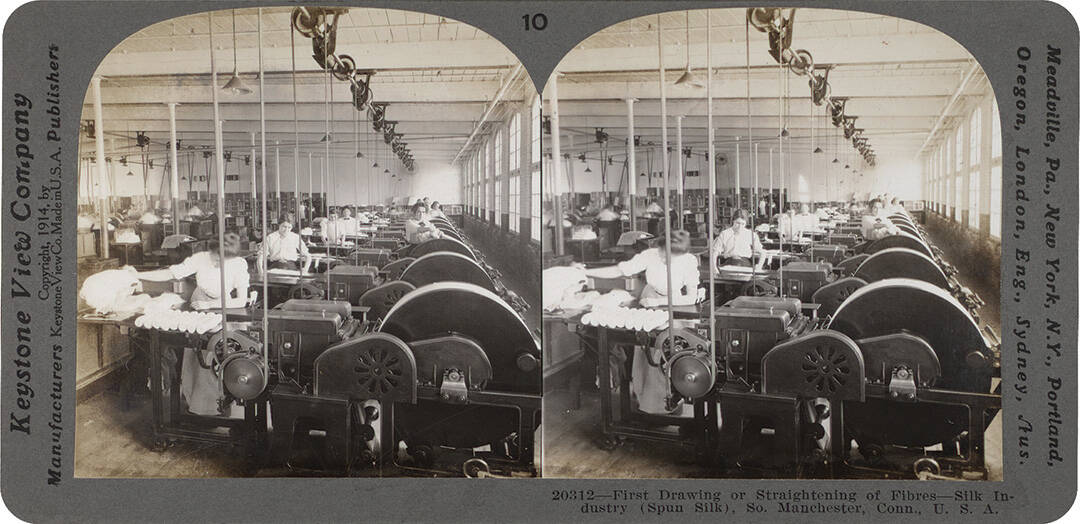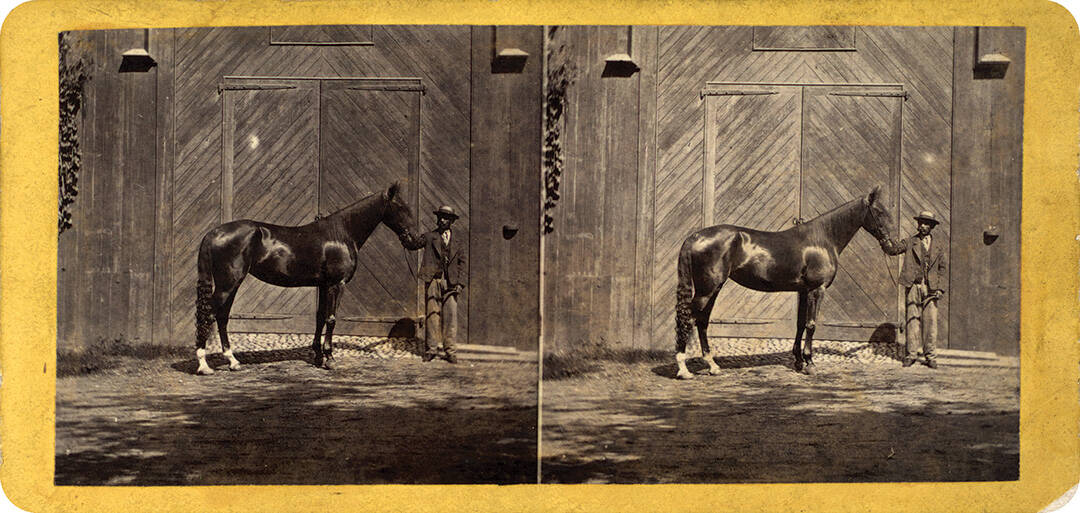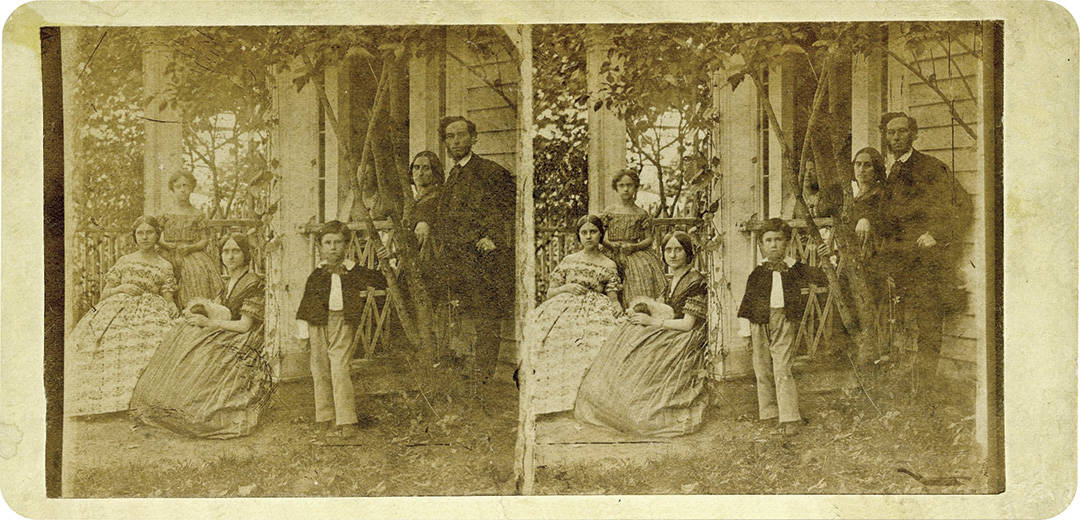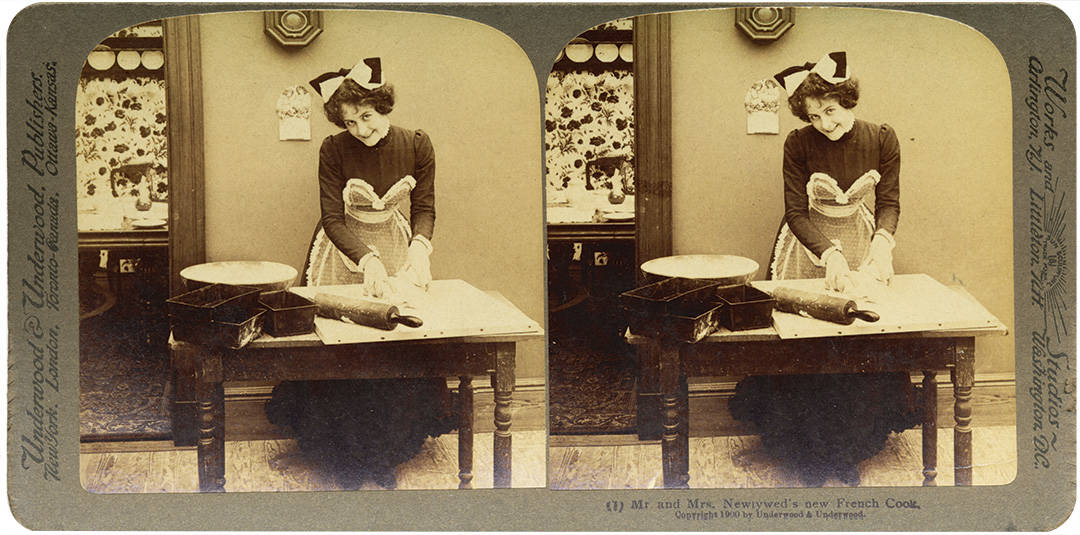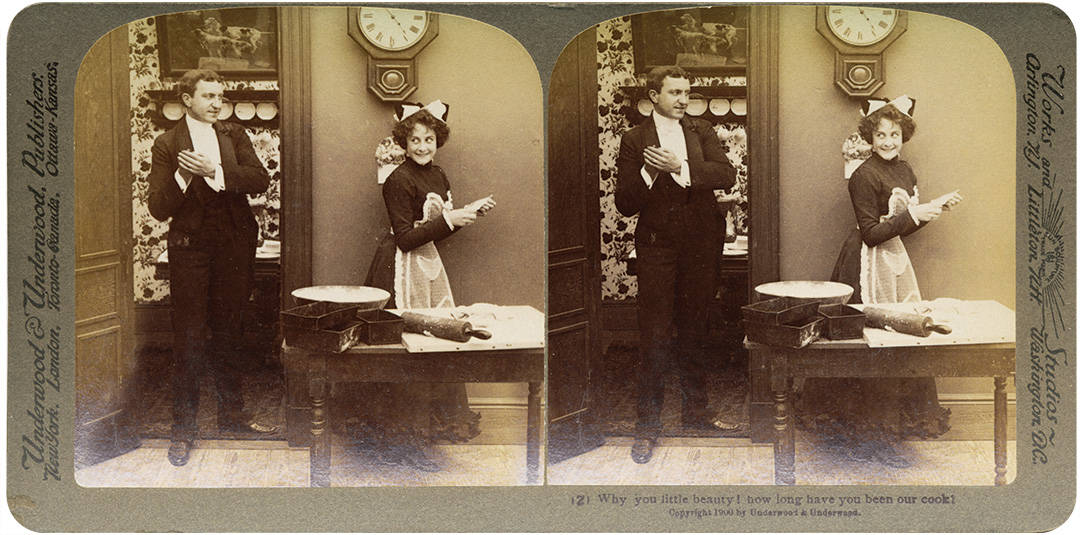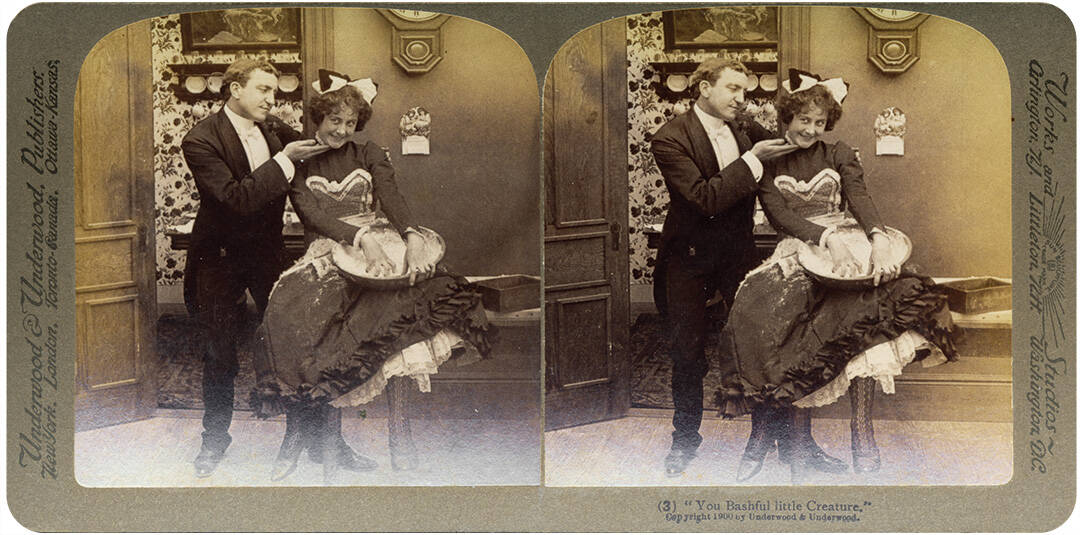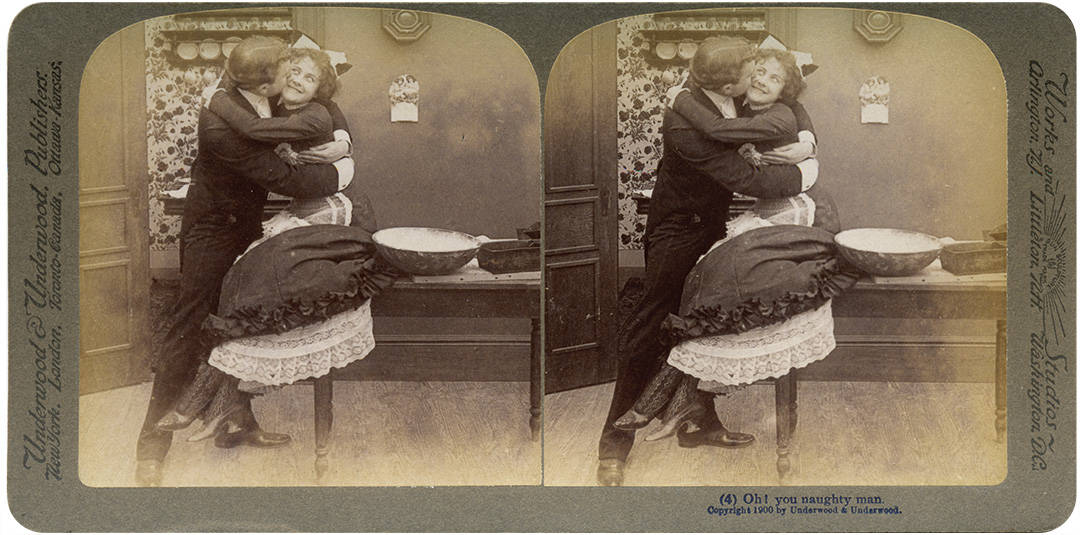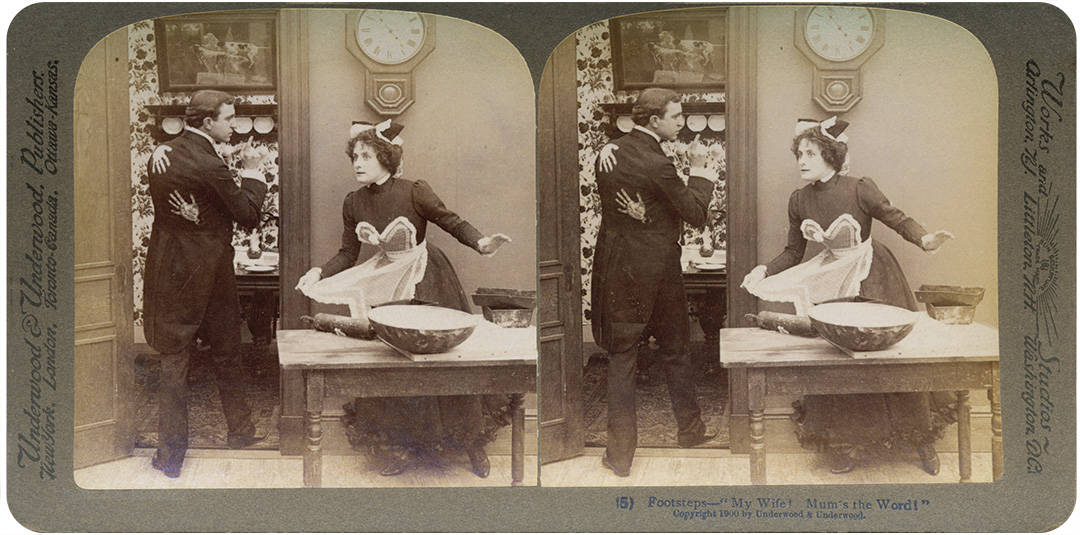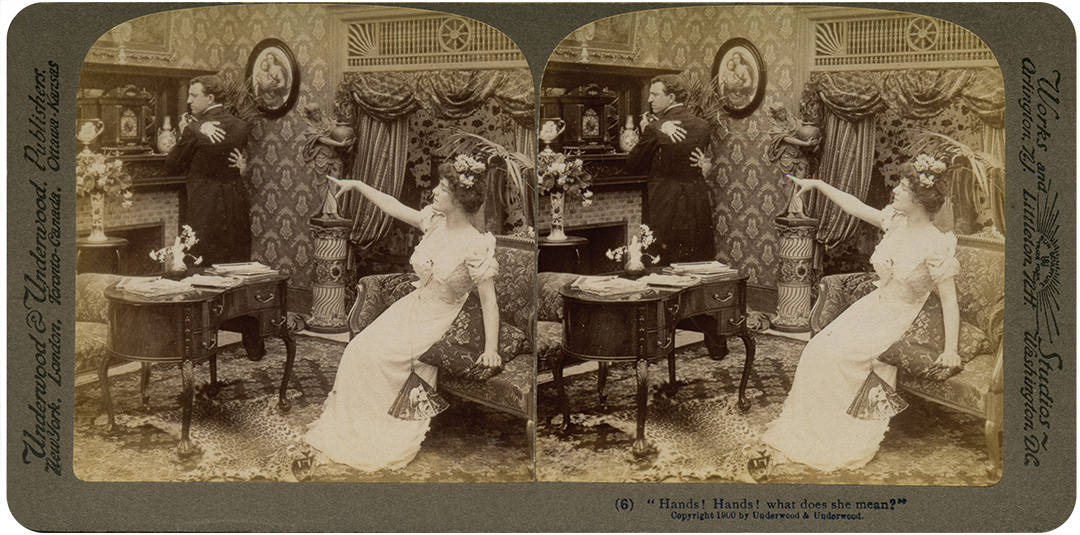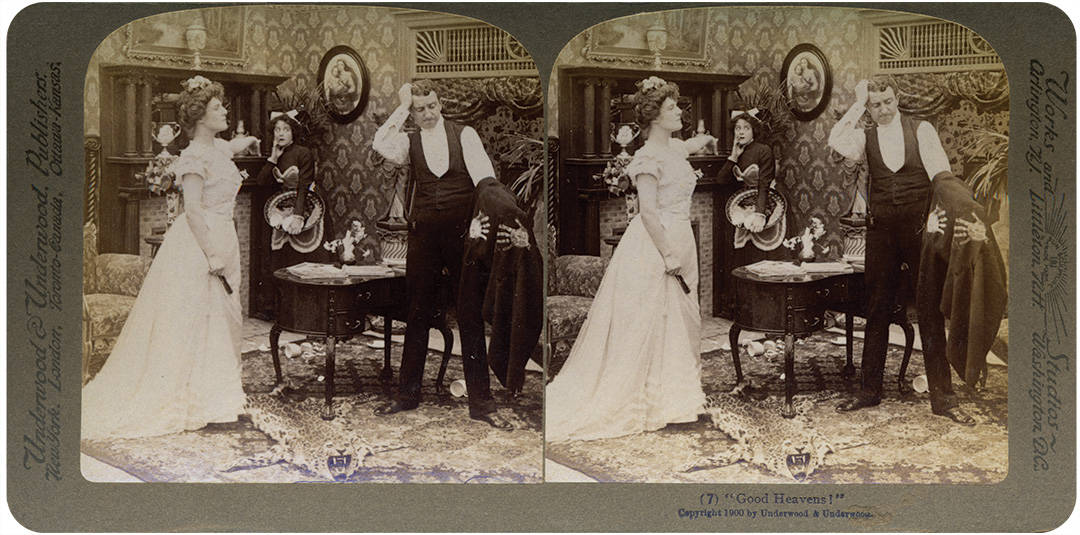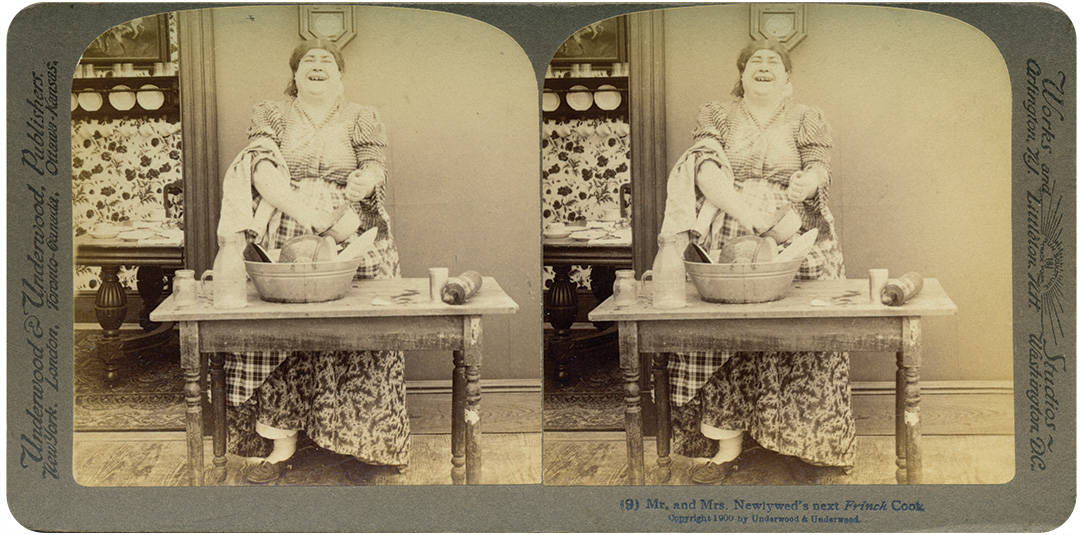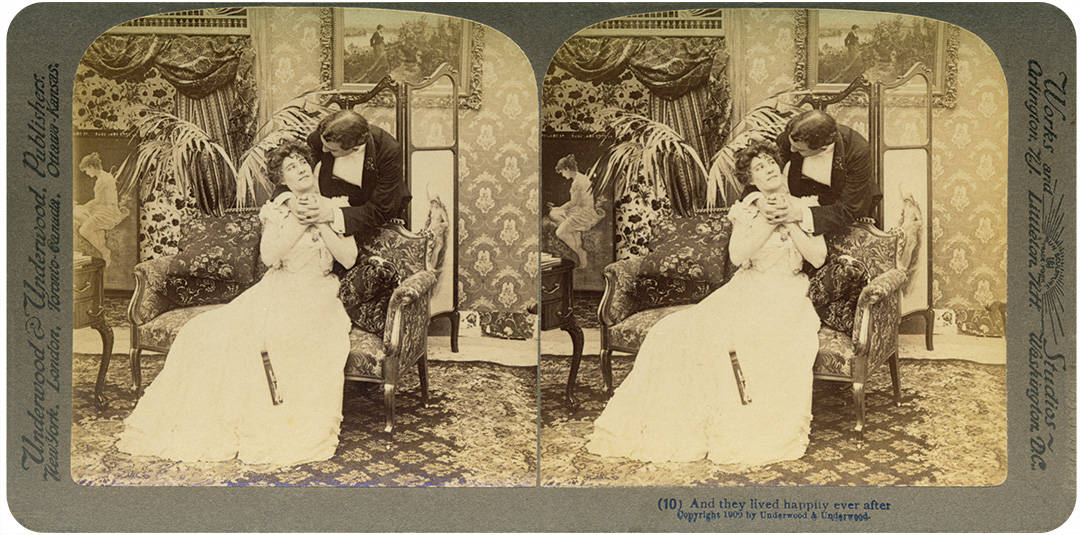SELF AND THE WORLD: EXPERIENCING PHOTOGRAPHY IN 19TH-CENTURY NORWALK
STEREOGRAPHS
Before film or television, stereographs were a form of popular entertainment and an early three-dimensional technology. The two lenses of a stereograph camera are about as far apart as human eyes and therefore take slightly different views of the same scene. When viewed through a stereo viewer, the images combine to appear three dimensional.
Although there were stereoscopic daguerreotypes, not until photographs were reproduced on a mass scale did stereo cards and viewers enter most middle class homes.
People could obtain sets of cards that told funny stories like Mr. and Mrs. Newlywed’s New French Cook (shown below), or Sedate College Girls at School. Stereocards could transport viewers to faraway places, show them current events, or teach them through museum tours.
~ Mr. and Mrs. Newlywed’s New French Cook ~



